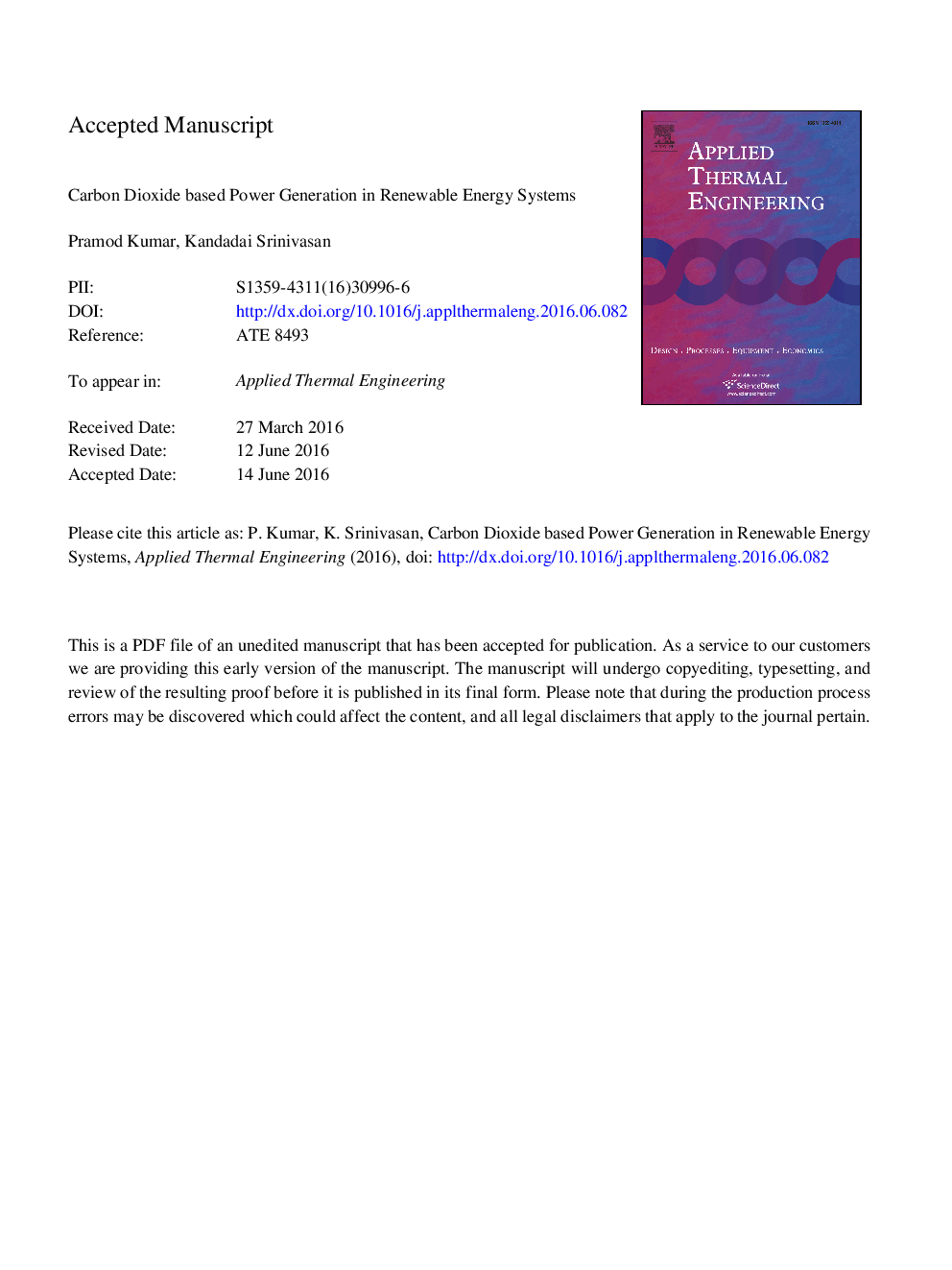| Article ID | Journal | Published Year | Pages | File Type |
|---|---|---|---|---|
| 4992201 | Applied Thermal Engineering | 2016 | 43 Pages |
Abstract
After a substantial impact on refrigeration, carbon dioxide (CO2) is gaining considerable attention as a working fluid for thermal power generation. This can be attributed mainly to its excellent heat transfer properties and compactness of components arising from its high density. It has the merit of being amenable to operation in sub-, trans- or super-critical Brayton cycle modes. However, inhibiting factors are high pressures needed when operated in trans- or supercritical cycles and the work of compression eroding most of the work of expansion in sub-critical cycle operation. Some of the lacunae of CO2 such as high work of compression can be alleviated by using non-mechanical means such as thermal compression using the adsorption technique either for partial compression in high pressure Brayton cycles or for total compression in low pressure cycles. CO2 has also been proposed as an additive to flammable hydrocarbons such that their flammability can be suppressed and yet retaining their other desirable thermodynamic qualities. This review explores the potential and limitations of thermodynamic cycles where either CO2 is used alone or as a component in mixture of working fluids. Inter alia, it also highlights the issues of regulation of load management using the efficiency-specific power output plane. When used as a blending component, pinch point in the regenerators affects the cycle performance. The objective is to identify research and developmental challenges involving CO2 as a working fluid specifically for solar power generation.
Keywords
Related Topics
Physical Sciences and Engineering
Chemical Engineering
Fluid Flow and Transfer Processes
Authors
Pramod Kumar, Kandadai Srinivasan,
